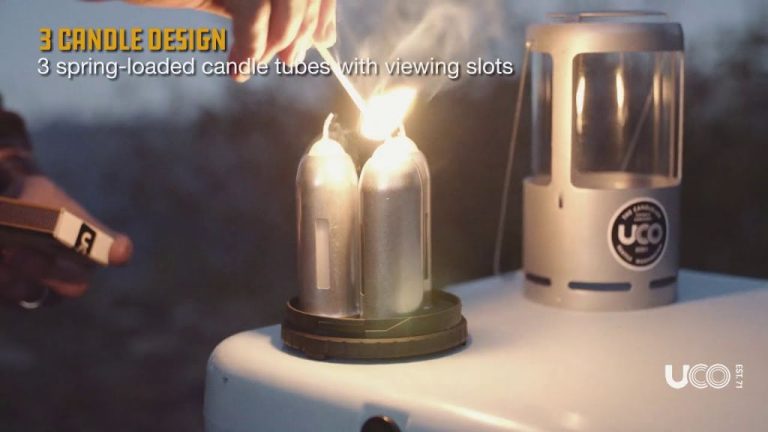Is The Candle Business Good?
The candle industry has experienced steady growth over the past decade, driven by an increased interest in home fragrance and décor. Candles are used to create cozy and relaxing environments, provide subtle lighting, and make homes smell inviting. While the candle market declined somewhat in 2020 due to the COVID-19 pandemic, it remains a staple product for many consumers looking to add ambiance to their living spaces.
The global candle market was valued at around $13.5 billion USD in 2021 and is projected to reach $17.3 billion by 2026. The United States is the largest market, accounting for over 30% of total revenue. Scented candles make up the majority of sales, though pillar candles, votives, tea lights, and taper candles are also popular options. Soy, paraffin, and beeswax are the most common candle wax types.
The candle industry provides opportunities for large manufacturers as well as small artisanal businesses. Major players include Yankee Candle, Bath & Body Works, and S.C. Johnson. However, there has been rising interest in handmade, natural candles from specialty retailers. Overall, the candle market is poised for continued steady growth as consumers seek to incorporate more home fragrance into their lives.
Market Size
The global candle market was valued at around $13.5 billion in 2021 and is expected to grow at a CAGR of 3.7% from 2022 to 2028. The increasing popularity of scented candles and candle accessories like candle holders is driving growth. North America is the largest regional market accounting for over 30% of global revenue. Other major markets include Europe, Asia Pacific, Latin America, and the Middle East & Africa.
Scented candles dominate with over 60% market share. Natural wax candles like soy, vegetable, and beeswax are growing quickly due to consumer preference for natural ingredients. Ecommerce sales of candles are surging as brands leverage social media and webstores to reach customers. The millennial demographic is a major target segment for many candle brands and products are being tailored to appeal to their preferences.
Demand Drivers
There are several factors driving demand for candles in recent years:
Gifting – Candles make for popular gifts for birthdays, holidays, weddings, housewarmings, and more. Their wide price range allows for gifting at various budgets. Scented candles in particular are a popular gift item.
Home decor – Candles are an affordable way to add warmth, ambiance, and fragrance to any living space. Their versatility as decor items that can complement any style has fueled candle purchases for home use.
Self-care/wellness trends – More consumers are investing in self-care rituals at home, including relaxing baths, meditations, or spa nights. Candles help create a soothing environment for these activities. Interest in aromatherapy and essential oils also drives demand.
Special occasions – Candles are commonly used to set the mood for date nights, anniversaries, proposals, and other celebratory moments. Holidays like Valentine’s Day also see upticks in candle sales.
Popularity on social media – Candles with beautiful, Instagrammable packaging and scents are trending. Social media increases exposure and drives impulse buying.
Major Players
The candle industry has several major players that dominate the market. Some of the top companies include Yankee Candle, Bath & Body Works, S.C. Johnson & Son (Glade candles), Colonial Candle, and Luminara.
Yankee Candle is perhaps the most well-known candle brand. Founded in 1969, it offers a wide selection of candle styles and famous scents. Yankee Candle has a large market share in the retail candle industry. It opened its first retail store in South Deerfield, Massachusetts in 1990 and has since expanded to over 500 retail stores globally.
Bath & Body Works is another large player owned by L Brands. It’s known for its fragrant candle collection and seasonal scents. The company has over 1,700 retail locations across North America.
S.C. Johnson & Son manufactures the popular Glade candle brand. Glade provides candles in glass jars, melt cups, wax melts, and plugins. It offers many classic and seasonal scents that consumers love.
Other significant companies include Colonial Candle, a Massachusetts-based manufacturer established in 1926, and Luminara, a leader in flameless candles. There are also numerous small and midsize specialty candle makers throughout the country.
Pricing Trends
The candle industry has seen some fluctuations in pricing over the years. On the lower end, basic candles like votives, pillars, and containers can retail for $1 to $5 each. Mass-produced candles made with cheaper wax blends and cotton wicks fall into this category.
Mid-range candles made by specialty retailers using better ingredients like soy, coconut, or beeswax and premium wicks retail from $10 to $25. These offer better scent throw and burn quality.
On the higher end, luxury candles from top brands using exclusive and natural ingredients like coconut wax, phthalate-free fragrances, and lead-free cotton wicks can retail for $30 to $80. These are marketed as home decor and can have unique vessel designs.
In general, margins on candles can range from 40% to 60% depending on the quality and price point. Luxury candles see higher margins given their positioning as high-end decor versus just functional lighting. Profit margins are lower for mass-produced budget candles since competition is higher in that segment.
Sales Channels
Candles are sold through a variety of sales channels including retail stores, online shops, wholesale outlets, craft fairs, and direct-to-consumer.
Retail stores such as supermarkets, drugstores, gift shops, and home décor stores are a major sales channel for candles. Top retailers like Bath & Body Works, Yankee Candle, Target, and Walmart have significant candle sections in their stores and websites. Specialty candle shops with an exclusive focus on candles are also popular brick-and-mortar retail options.
Online sales have grown rapidly along with the rise of e-commerce. Major retailers sell candles through their websites while small candle makers use platforms like Etsy and Shopify. Social media is also a popular direct sales channel, with many makers promoting their products on Instagram and Facebook.
Wholesale is important for selling candles in bulk to retail stores, gift shops, hotels, spas, and other businesses. Trade shows provide opportunities for candle makers to connect with wholesale buyers.
Craft fairs, festivals, and markets are a common sales venue for small and micro candle businesses to sell directly to consumers. Many candle makers also sell directly through their own online stores and social channels.
Consumer Demographics
The candle industry has a broad consumer base, as candles appeal to a wide variety of demographics. However, there are some key groups that make up the majority of candle purchasers:
– Women – Studies show over 80% of candle purchasers are female. Candles are often perceived as a comforting, soothing product that appeals to women for creating a relaxing home environment. Scented candles in particular are popular among women.
– 25-44 Year Olds – Younger and middle-aged adults are the most likely demographic to buy candles. People in this age group often have more disposable income and are decorating their first homes. Candles make popular housewarming or holiday gifts for this group.
– Higher Income Households – Candles from premium brands can be expensive, so middle to higher income households are more likely to purchase them. The personalization and luxury factor of candles appeal to higher income consumers.
– Homeowners – People who own their home, rather than rent, are more likely to purchase candles. Homeowners use candles for decorative purposes and to create an ambiance in their personal space.
– Gift Givers – A significant portion of candle sales come from people purchasing candles as gifts, especially during the holiday season. Candles make popular gifts because of their broad appeal.
Understanding the demographics and motivations of candle buyers allows retailers and manufacturers to better market to and serve their core customer base.
Challenges
The candle industry faces some key challenges that threaten future growth and sustainability. Some of the main issues include:
Increased competition: The popularity of candles has led to a crowded marketplace with many new entrants, driving down prices and margins. Established companies have to contend with private label and foreign imports. Maintaining a competitive edge is difficult.
Rising costs: Raw materials like wax, fragrance oils, and packaging are becoming more expensive. Higher transportation and labor costs are also squeezing candle makers’ profits. Keeping pricing competitive while covering increased input costs presents a challenge.
Sustainability concerns: Customers want eco-friendly, natural candles. But these cost more to produce and don’t burn as cleanly. Striking the right balance between sustainability and performance is tricky.
Safety regulations: With rising incidents of house fires associated with candle use, regulators are imposing stricter safety standards. Meeting these requires investments in testing and manufacturing changes, adding to costs.
Changing consumer preferences: Younger buyers are less interested in traditional scented candles, preferring more unique products like flameless, electronic, or artisanal candles. Adapting product development to shifting preferences poses a risk.
Overall, while candles remain popular, the industry must evolve to address emerging consumer demands in an increasingly competitive marketplace while managing rising costs and tighter regulations.
Future Outlook
The candle industry is expected to see steady growth in the coming years. Here are some projections for the future of the candle business:
– Continued expansion of the home fragrance market will drive demand for scented candles. Essential oil diffusers are rising in popularity as well, so candle makers may adapt their products to compete.
– Customization and personalization trends will lead more candle brands to offer customizable features, unique scents, and tailor-made products.
– Candles with natural, eco-friendly ingredients like soy, beeswax and essential oils will likely gain market share as consumers seek sustainable options.
– Direct-to-consumer sales via e-commerce will become increasingly important. Small candle businesses can benefit from selling online through their own websites or platforms like Etsy.
– Technology like smart candles with flickering flame LED lights instead of real fire may disrupt the market. However, traditional candles still have strong consumer appeal.
– As Millennials gain more purchasing power, their preferences for unique scents and aesthetic branding will shape new product development.
While facing some competition from alternative products, candles remain a staple home product with a promising future. There are opportunities for innovation and growth by targeting evolving consumer demands in this market.
Conclusion
The candle business is a profitable market with steady growth potential in the coming years. Key takeaways include:
- The global candle market was valued at $11.2 billion in 2021 and is projected to reach $14.3 billion by 2027, reflecting a 3.2% CAGR.
- Demand is driven by growth in home decor, aromatherapy, and gift-giving occasions. Scented and specialty candles are key trends.
- Leading players like Yankee Candle and Bath & Body Works enjoy strong brand recognition. Smaller artisanal brands are rising in popularity.
- Prices range widely based on materials and branding. Mass market candles cost $5-$15 while premium candles can be $50+.
- Online and specialty retail are gaining share, though big box stores and supermarkets maintain volume.
- Millennials and Gen Z represent growth demographics, while Baby Boomers also consume candles frequently.
- Competition is high and shelf space contested. Customization and innovation in fragrances, designs, and materials can differentiate brands.
- The market outlook remains positive. Consumers continue to invest in small luxuries and home decor. However, economic conditions may impact growth.
In summary, the candle business represents a sizable market with room for established and new players to thrive. By focusing on unique value propositions, target consumer needs, and channel strategies, candle brands can sustain success despite competitive forces.





